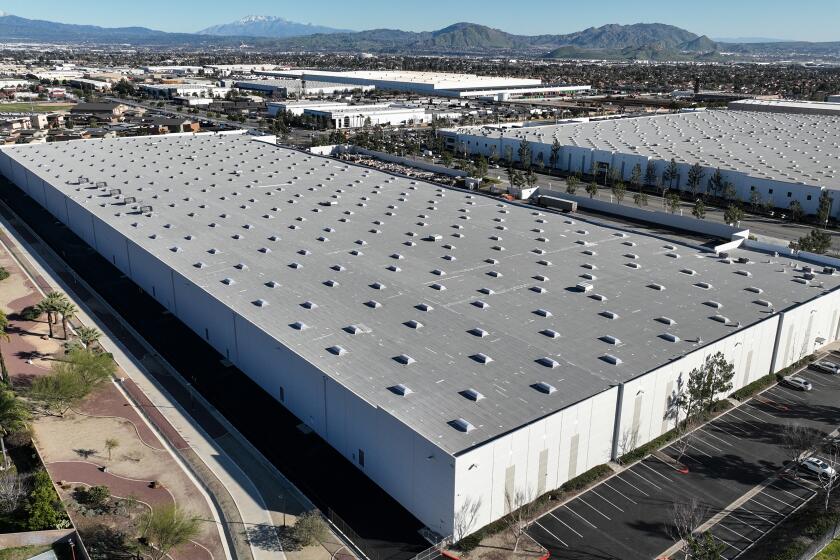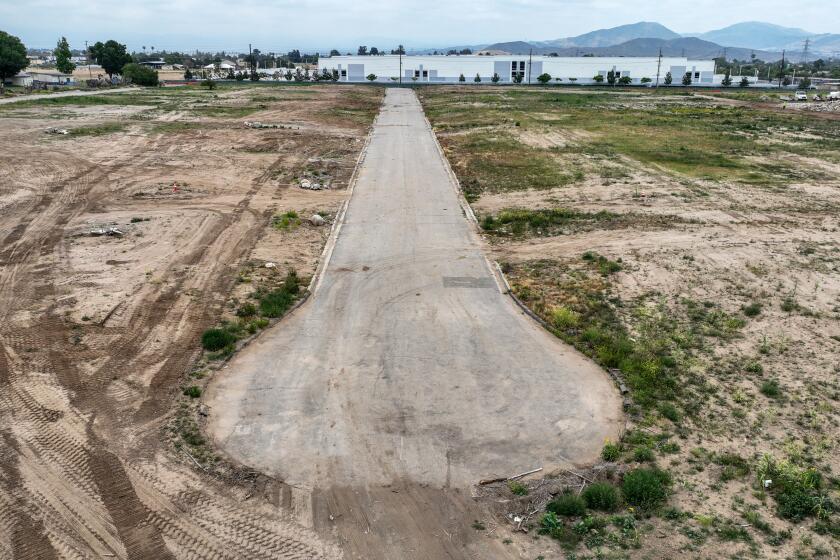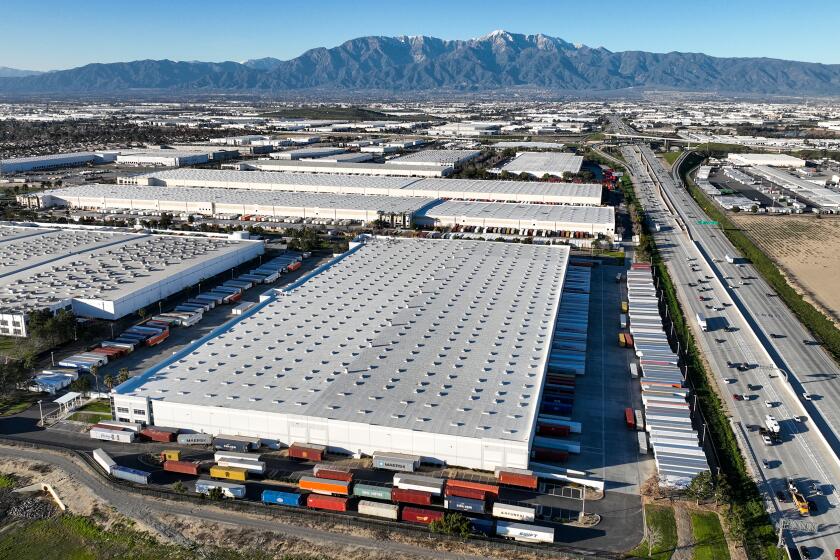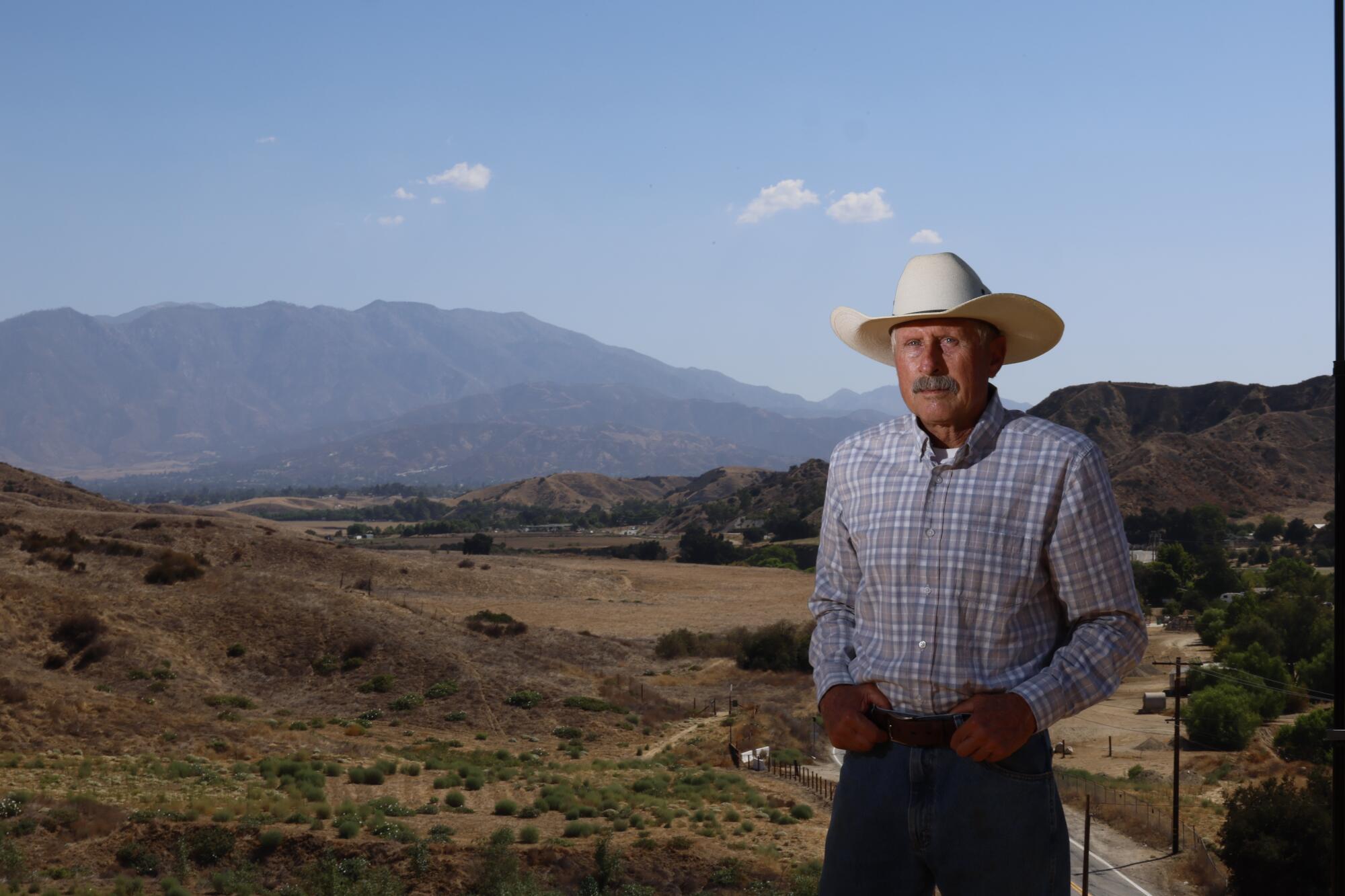
When David Matuszak looks out over Live Oak Canyon from his four-acre horse ranch, he has a sweeping view of farm fields and grazing cattle. For nearly 40 years, he’s been riding equestrian trails dotted with coastal oaks, chamise and buckwheat and flanked by the snow-capped mountains of the San Gorgonio Wilderness.
“It’s one of the most scenic areas of Southern California,” said the author and retired high school teacher who also serves as president of Friends of Live Oak Canyon, which he describes as a grassroots environmental homeowners association.
But Matuszak and others fear that could change if the city of Yucaipa green-lights the construction of two massive warehouses in an undeveloped area about a mile from Matuszak’s ranch. They say the project would spoil natural spaces and undermine the town’s rural character, bringing increased traffic congestion and air pollution. They fear it’s part of a push by city officials to remake Yucaipa into yet another Inland Empire logistics hub dominated by giant fulfillment centers and rumbling diesel trucks.
“That’s exactly what we’re worried about, that we’re the next Fontana, Ontario or San Bernardino,” said Kathy Sellers, a retired San Bernardino courts reporter who’s lived in Yucaipa for 38 years. “That’s why we all live out here, to get away from that.”
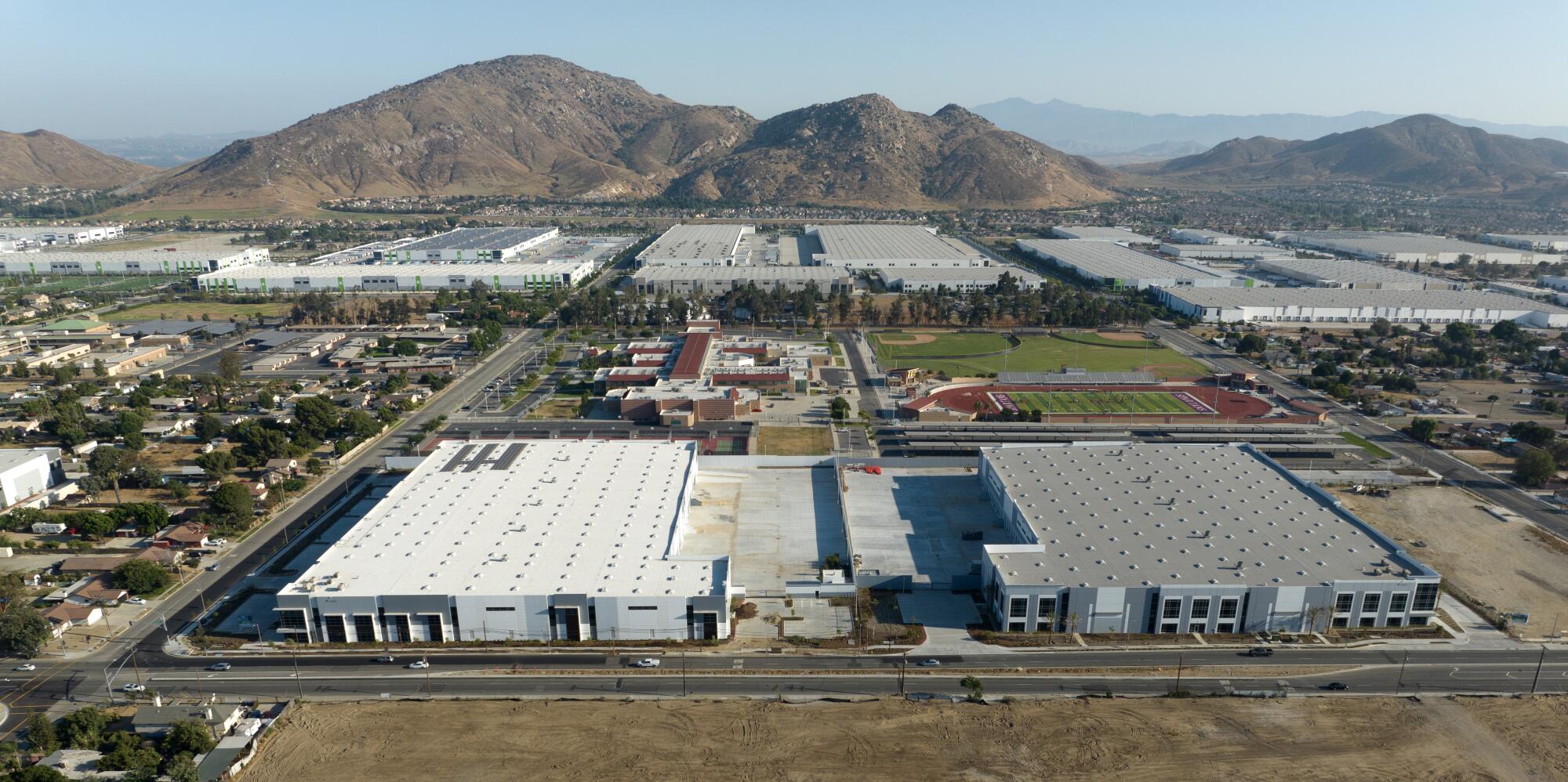
San Bernardino and Riverside counties are already home to an estimated 4,000 warehouses that span some 37 square miles — the largest contiguous cluster on the planet, according to a report released by environmental groups last year. The sprawling area east of Los Angeles sits near freeways and rail spurs that ferry goods to and from the busy ports of L.A. and Long Beach. Demand for the logistics centers was further driven by an explosion in e-commerce during the COVID-19 pandemic.
The growth in warehouse development has raised concerns about poor air quality, increased cancer risk and the destruction of green areas that act as natural carbon sinks. More than 60 organizations, including Friends of Live Oak Canyon, signed a letter calling the surge one of the most critical environmental justice issues facing the region and urging Gov. Gavin Newsom to declare a state of emergency over its public health implications.
Already, studies consistently rank the Inland Empire as having among the worst air quality in the nation. The region is forced to contend with high levels of diesel particulate matter, said Timothy Mullins, who moved to Yucaipa 25 years ago to escape development in Redlands.
“By this project going in, we’re going to be even more burdened, and the health of the community is going to be degraded,” he said.
A bill on Gov. Gavin Newsom’s desk would set standards for industrial warehouse development near homes and schools. Opponents say those standards are weak and won’t lessen health risks for residents living in the shadow of e-commerce.
Until recently, Yucaipa had largely been spared from this type of development. Now, a 363,000-foot warehouse near the border with Calimesa is slated for completion in the next couple months. And the project currently being considered — dubbed the Pacific Oaks Commerce Center — would consist of two buildings of roughly 1 million square feet each and generate some 1,100 daily truck trips, according to a traffic study.
The project would be a financial boon to the city, which has struggled with a growing budget deficit that has officials planning cuts to public safety and community services should voters fail to pass a November ballot measure that would raise the sales tax.
Developers would pay roughly $14 million in impact fees and invest millions more in infrastructure improvements, including building a water line and widening a portion of Live Oak Canyon Road, said Benjamin Matlock, Yucaipa city planner and deputy director of community development. That would help the city attract other projects to the area, including badly needed housing, he said. The developers have also agreed to provide funding for an aerial ladder truck for the Yucaipa Fire Department, he said.
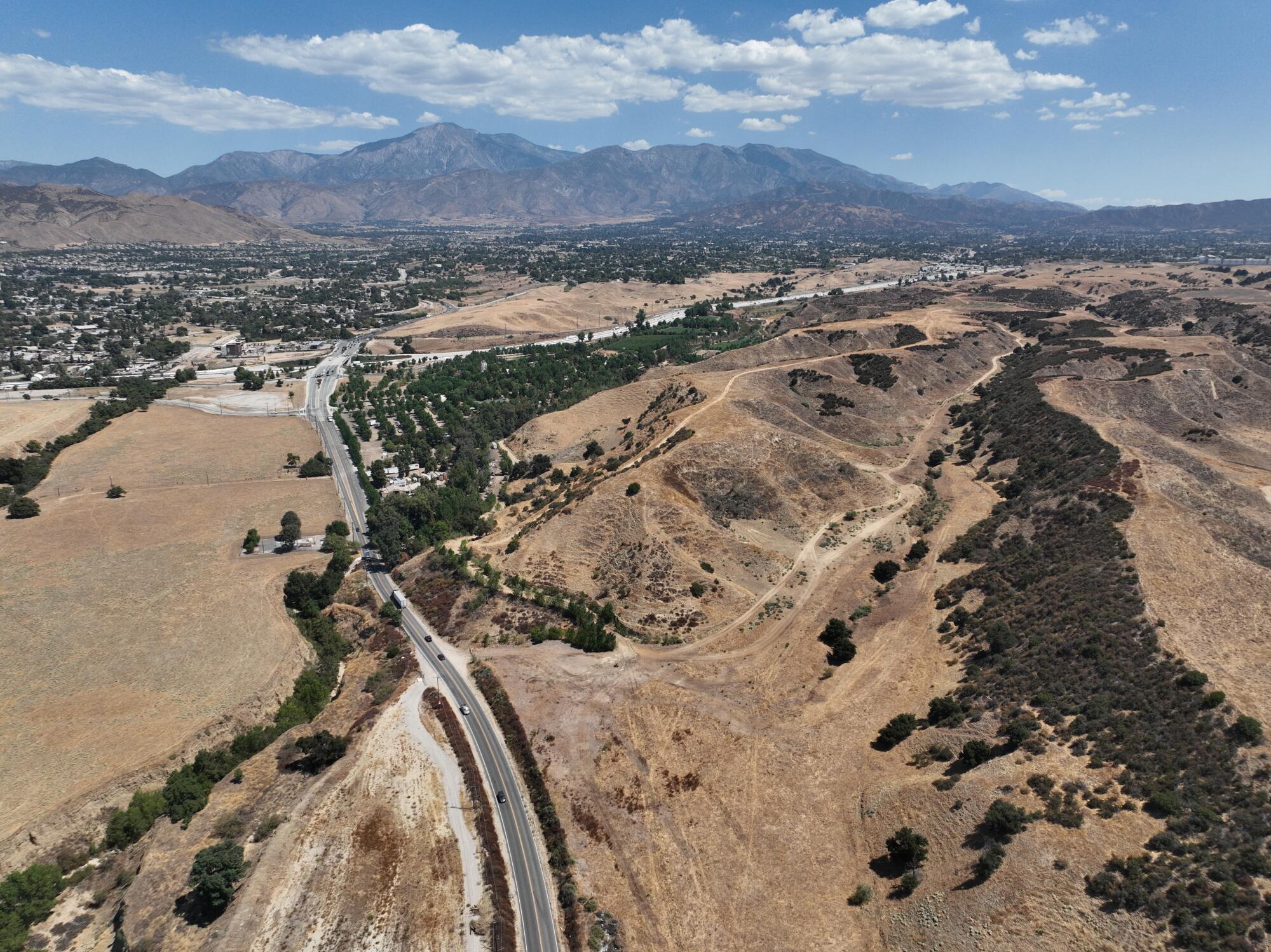
The infrastructure upgrades would total more than $37 million, financed without using taxpayer dollars or bonds, according to Dan Floriani, co-founder of project developer Pacific Industrial. The project would include 96 acres of permanent open space with a trail accessible to the public. An economic benefits analysis by a third-party consultant estimates it would create 1,200 to 1,600 permanent jobs, he wrote in an email.
Edward Timmons, whose children are fifth-generation Yucaipa residents, once worked as a manager at a large fulfillment center in Rialto. He said the work was dominated by low-paying, low-skilled jobs with high rates of attrition. “Your average employee would stay there about three months; average manager, four to six months,” he said. “It’s not a place where you build a career. It’s a place that fills in the gaps until you find a better place to work.”
He also questioned whether the project would provide the long-term economic benefits the city is hoping for. The local logistics industry has cooled since the pandemic, with warehousing and storage jobs shrinking for the first time in more than two decades and industrial building vacancies rising, according to an L.A. Times report published earlier this year.
Timmons, who now works as a real estate broker and mortgage loan originator, pulled listings within a 30-mile radius of Yucaipa and tallied about 27 million square feet of vacant warehouse space when it comes to warehouses over 250,000 square feet.
Bloomington is the latest Inland Empire community to weigh the tradeoffs of allowing a developer to bulldoze a rural neighborhood to make way for a sprawling warehousing complex in service of online shopping.
Timmons and other residents said that, while talks between the city and developers have been taking place for four years, many locals didn’t become aware of the proposal until it went before the planning commission in June. In July, the commission voted 3-2 not to recommend the project.
“Nobody wants this,” Timmons said.
In order for the project to go forward, Yucaipa’s City Council must both approve it and update a 2008 plan that specifies how the city’s freeway corridor — a 1,200-acre area bisected by Interstate 10 — should be developed. The council is expected to vote Sept. 23.
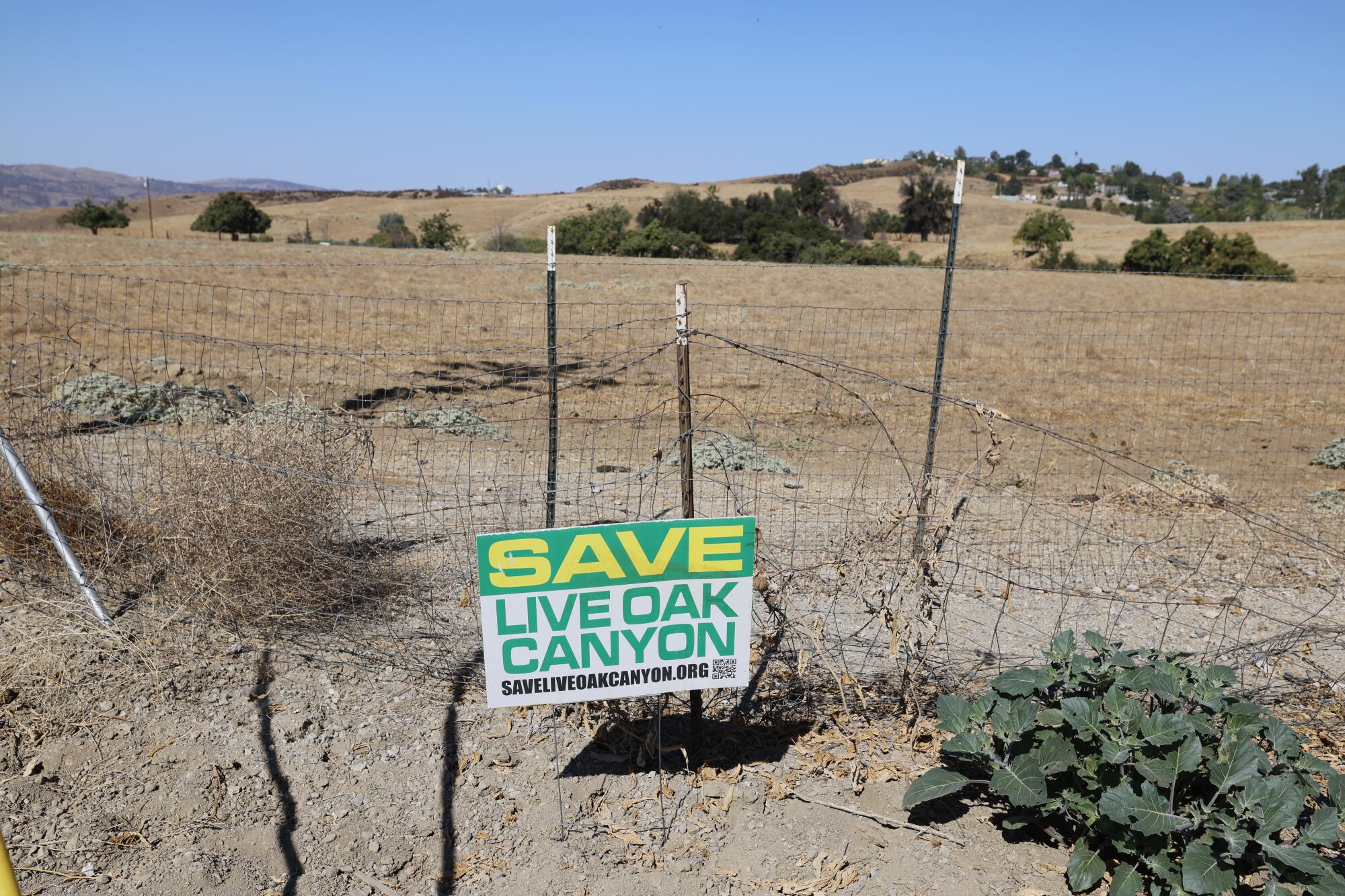
The 2008 plan already permits warehouses in certain areas, said Matlock, the city planner. The proposed update would reconfigure where those warehouses could be built, from an area closer to the freeway to a more discrete location, he said. The developers went through an “exhaustive effort” to design the site to be adjacent to a wastewater treatment facility and tucked behind hills, he added.
Kristine Mohler, who was on the committee that drafted the 2008 freeway corridor plan during two years of meetings, said the choice to zone retail, commercial and industrial activity next to the freeway was deliberate, “so that people would go on and off the freeway and shop and do those type of things and not have such a tremendous impact on housing areas and the land.”
The original plan earmarked the internal portion of the corridor for housing and open space, whereas under the proposed update, the warehouse project would be at its core, with housing around it, she said.
“That’s just absurd for that area,” she said. “So what we originally planned, which we thought was very efficient, as non-invasive as possible, has turned into a huge warehouse hub. And that’s just not what we had in mind.”
As toxic emissions from diesel traffic choke the air, activists are calling for a moratorium on new warehouses and for the governor to declare a state of emergency.
Although the warehouse complex wouldn’t be visible from the freeway, it would be visible from nearby trails and open spaces, said Sherli Leonard, president of the Redlands Conservancy. The nonprofit manages a 341-acre preserve that’s about a half-mile from the proposed complex and another 70 acres that’s nearby.
“The views are lovely,” she said. “And it’s not just that they’re lovely but they actually benefit the human psyche. Look at car commercials: they don’t ever show someone driving through a warehouse district or even a neighborhood.”
The land earmarked for the complex is privately owned and not open to the public. However, she said it is a wildlife corridor for mountain lions, coyotes, foxes, bobcats and the occasional bear.
“It would cause significant damage to that environment, to that habitat, and also open the door for more such things — that’s from a conservationist standpoint,” she said. “From anybody’s standpoint, it will introduce 18-wheelers to a freeway offramp that is already seriously congested at many times of the day and there isn’t any way to mitigate that, you just have to deal with it.”
The shrub-like oak tree has been a fixture of the landscape since mastodons and saber-toothed cats last roamed Southern California.
When Matuszak moved to Yucaipa in 1977 to teach exercise science and biomechanics at the local high school, the nearby communities of San Bernardino and Redlands were dominated by orange groves and open fields where farmers grew strawberries and onions, he said.
“Now, there are miles and miles of these warehouses and it’s concrete — concrete roofs, concrete walls, parking lots and so forth,” he said. That’s created a heat island effect that’s raised local temperatures by several degrees on top of global warming, he said.
“We’re seeing the beginnings of that same push to extend what they’re calling the logistics capital of the world all the way out into our neck of the woods,” he said. “And we’re just furious about it. We’re going to do everything we can to stop that from happening.”
